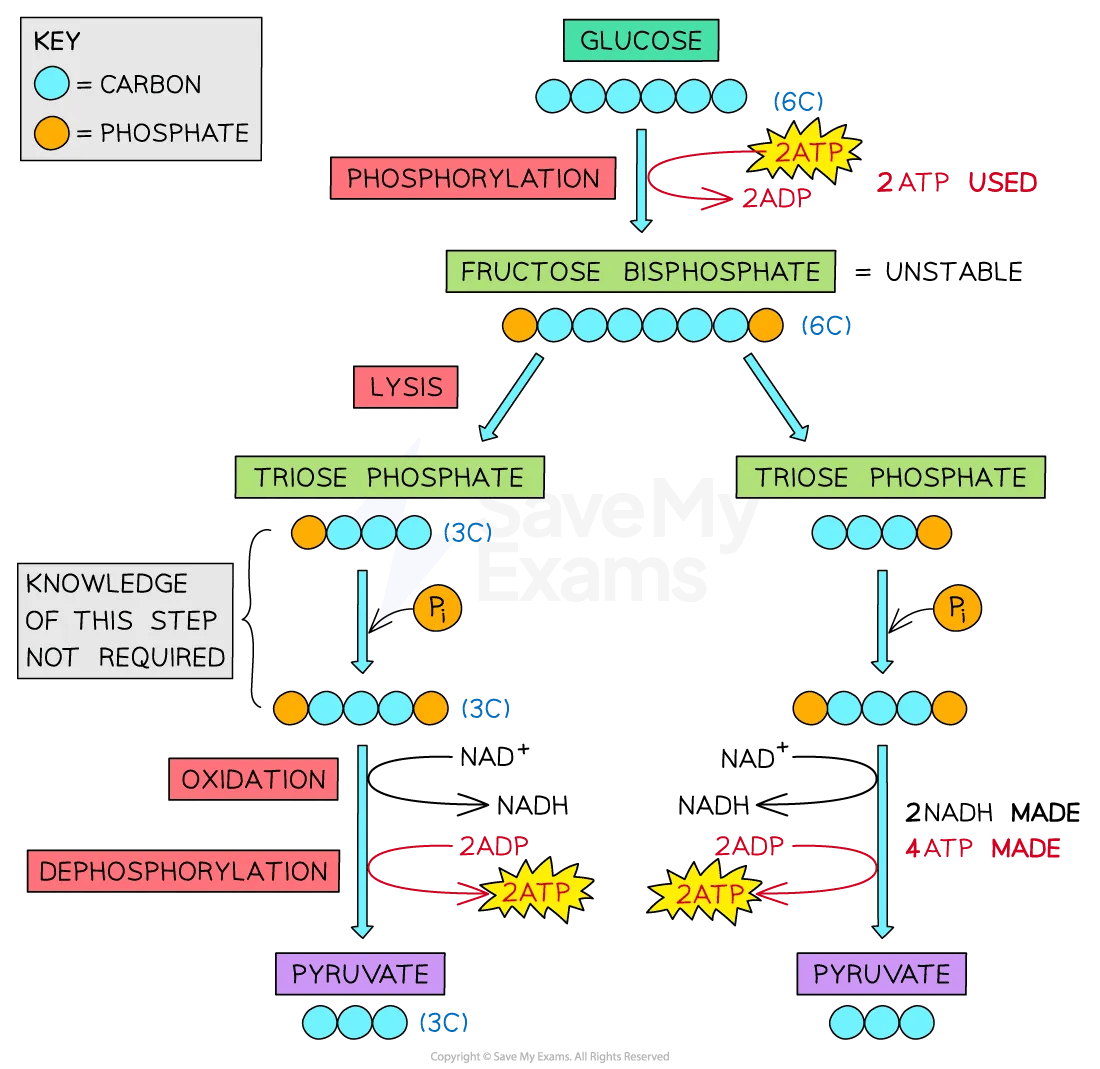Aerobic Respiration: Glycolysis (Cambridge (CIE) A Level Biology): Revision Note
Exam code: 9700
Aerobic respiration: glycolysis
Glycolysis is the first stage of respiration
It takes place in the cytoplasm of the cell and involves:
Trapping glucose in the cell by phosphorylating the molecule
Splitting the glucose molecule into two
It results in the production of
2 pyruvate (3C) molecules
Net gain 2 ATP
2 reduced NAD
Steps of glycolysis
Phosphorylation: glucose (6C) is phosphorylated by 2 ATP to form fructose bisphosphate (6C)
Glucose + 2ATP → Fructose bisphosphate
Lysis: fructose bisphosphate (6C) splits into two molecules of triose phosphate (3C)
Fructose bisphosphate → 2 Triose phosphate
Oxidation: hydrogen is removed from each molecule of triose phosphate and transferred to coenzyme NAD to form 2 reduced NAD (sometimes called NADH)
4H + 2NAD → 2NADH + 2H+
Dephosphorylation: phosphates are transferred from the intermediate substrate molecules to form 4 ATP through substrate-linked phosphorylation
4Pi + 4ADP → 4ATP
Pyruvate is produced: the end product of glycolysis which can be used in the next stage of respiration
2 triose phosphate → 2 pyruvate

Examiner Tips and Tricks
It may seem strange that ATP is used and also produced during glycolysis. At the start ATP is used to make glucose more reactive (it is usually very stable) and to lower the activation energy of the reaction. Since 2 ATP are used and 4 are produced during the process, there is a net gain of 2 ATP per glucose molecule.

Unlock more, it's free!
Did this page help you?